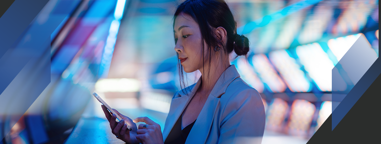- Home »
- Inform »
- Topics »
- Multi Asset »
- Equities still offer the most attractive risk/return ratio.
4 minutes to read
As is commonly known, building up assets by investing in interest-bearing securities is becoming increasingly difficult. What kind of a contribution can multi-asset funds make?
It’s a fact that increasing numbers of investors are on the lookout for a suitable exit from the interest quagmire. Multi-asset funds equipped with highly functional risk management can be a good option for investors who do not wish to be exposed to the full stock market risk.
You focus chiefly on equities, don’t you …
Yes, shares are the key element in a fund with a weighting of at least 60 per cent. But bonds, currencies and gold also play an important role. After all, our aim is to generate returns similar to those of equities across and beyond a full economic cycle. At the same time, however, we want to soften the volatility.
How do you invest? In individual securities or funds – and why?
I primarily invest in individual securities. The idea behind this is that we don’t only want to generate extra returns for our investors by controlling the various investment classes, but also via the selection of individual securities. Funds and exchange-trade index funds in a proportion of up to 10 per cent can be added to the overall portfolio.
Many multi-asset funds invest according to fixed quotas, for example 60 per cent in equities and 40 per cent in bonds. Is that also an option for you?
Well, we follow a completely different approach. We aren’t tied to a benchmark index. Flexibility and a strong counterweight through disciplined risk management are very important to us. “We ask ourselves before every single investment decision: does the risk really correspond appropriately to the return opportunities?“ If this should not be the case, then we are also not afraid to temporarily hold a higher cash position.
Can you please explain briefly how risk management works in practice?
We cooperate very closely with our risk managers, who simulate all transactions planned and their possible impacts on the portfolio risk. Basically, we utilise a fixed risk framework. You can imagine this to be something like two guardrails within which we can move flexibly. If I get to close to one of the guardrails, the risk managers point this out to me. In exceptional cases, our risk management colleagues can temporarily reduce my scope for action by tightening the guardrails slightly. In this way we want to ensure that the fund does not deviate from its pre-defined risk profile when a strong price correction occurs on the markets, for instance.
Does this mean it can happen that you’d like to implement an investment idea and the risk manager discourages you from doing that?
Normally, individual transactions only have little influence on the more global portfolio risk. In such cases I don’t need prior approval by the risk managers. The situation is different when it comes to major portfolio rebalancing operations, where we certainly do exchange views in advance about the implications from a risk angle. Sometimes we turn the tables and I ask the risk managers with which instruments I can bring my portfolio risk most efficiently to a certain target size.
In the summer of 2019, at times you did not invest 20 per cent of the fund assets – was this because you feared a setback?
The cash quota itself doesn’t really indicate much about how I’m positioned. After all, I can also use derivatives to control the investment quota. But it’s true that after the strong performance in the first six months, I positioned the portfolio somewhat more defensively. Nevertheless, equities still offer the most attractive risk/return ratio.
Assuming market sentiment is extremely positive: can it happen then that you invest 100% of the portfolio in equities?
In such phases we tend to reduce the risks in a portfolio step by step. In good times, ideally this enables us to build up a risk buffer to which we can have access during correction phases.
Is gold an investment topic for you?
We normally don’t hold commodities directly, but only via equity investments in commodity companies. Gold is an exception in this regard. This is where I prefer a direct investment, and I’ve held a share of 5 per cent in the form of a gold ETC in the fund for some time now.
What about currencies?
Oh, they play a very important part, too. Their weighting incidentally is not only the result of the equity/bond position; it is actively managed. And again, the golden rule is that we only assume currency risks if we perceive these to create corresponding performance potential.
Your objective is to generate equity-like returns; how much risk do investors have to shoulder in this regard?
In the past six-and-a-half years, we participated in equity market rallies with a proportion of about 75 per cent. Yet the fund was subjected to the downward movements to an extent of only about 50 per cent. The fund therefore achieved a performance that was almost at eye level with that of the MSCI World. However, the volatility, in other words the fluctuation in value, was considerably lower. The volatility of the MSCI World has been at about 13 per cent since 2013, while that of the fund amounted to only 9 per cent.
Your strategy therefore was quite successful. What can investors expect in the future?
We want to enable investors to have access to the opportunities available on the stock market and to simultaneously limit the fluctuations that occur during stress phases. Within the dynamic multi-asset category, the fund offers an innovative approach that combines flexibility with a strong focus on risk management.
Please complete the following 3 sentences (please select):
If a friend would like to invest 10,000 euros …
... I advise him not to talk me into giving him a “hot tip”. My biggest convictions are reflected in the fund’s holdings – after all, that’s where I also invest my own money.
When I happen to be wrong on an investment, …
... I try to deal with it just as calmly as I would with a sky-rocketing security in the portfolio – unfortunately I only succeed in doing so quite rarely
My (professional) ideal or role model …
... can’t be replaced by an algorithm.




